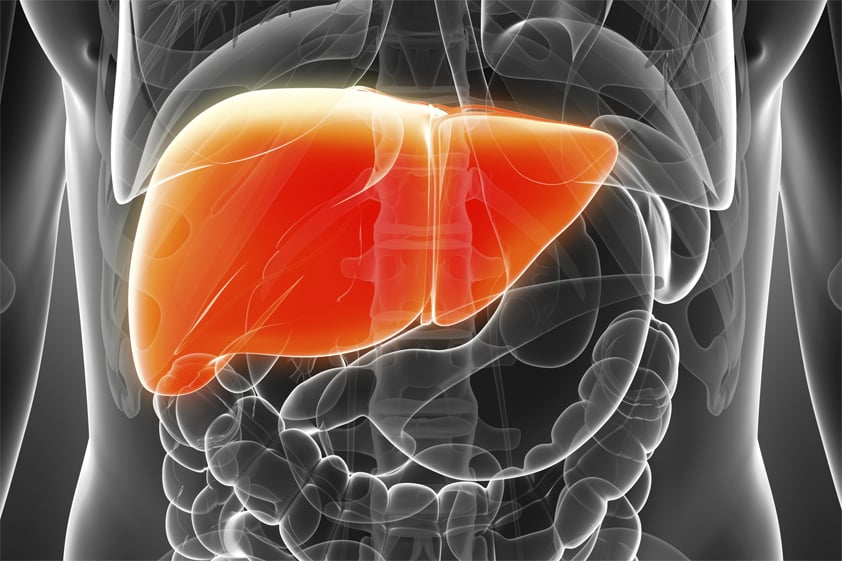Confronting A Crisis In Liver Disease
In the past decade, there has been an alarming increase in cases of liver disease including liver cancer. This menace is on the rise, but treatments are better than ever.


An older man with a history of alcohol abuse—that’s the image that comes to mind when you think of a patient with liver disease, right? But the fact is that this illness affect both sexes, and it’s a growing problem among nondrinkers too—especially those who are obese or have diabetes.
The liver, the body’s largest internal organ, is about the size of a football. It helps the body digest food, store energy, clean blood and filter toxins. and in the past decade or so—apparently due in part to rising obesity rates and poor eating habits—there has been an alarming increase in cases of liver disease, including liver cancer.
That’s why Saint Barnabas Medical Center has created a new initiative called the Liver Center. It was launched this past July, under the direction of Robert Schuman, M.D., a specialist in liver disease and gastroenterology.
“Liver disease has been hitting the front pages a lot in the last couple of years,” says Dr. Schuman. “it’s underdiagnosed in this country, but awareness of it is growing.”
This heightened awareness comes in part with recent government-issued guidelines calling for all baby boomers (people born between 1945 and 1965) to be screened for hepatitis C, an infectious liver disease that is spread by a virus. Affecting about 5 million people, hepatitis C has been called a silent epidemic because three-quarters of the people infected with the virus don’t know they have it. “They can go a long time without showing symptoms,” says the doctor. “The disease often lies undetected for 20 to 30 years.” by that time, in many cases, the virus has done significant damage.
Hepatitis b is less common than hepatitis C, with about 1 million diagnosed cases, predominantly among the Asian population. (See “Battling Hepatitis B”) But hepatitis B is also underdiagnosed, according to Dr. Schuman.
Besides these two viruses, there are lifestyle-related causes for the increase in liver disease. While chronic alcohol abuse is known to be dangerous to the liver, recent years have made it increasingly clear that eating behavior apart from alcohol can also have a harmful influence on the liver, just as it can on the waistline and the metabolism. “Fatty liver disease has become widespread in our country because of obesity and related issues like diabetes,” the doctor says. “Almost 25 percent of the population is at risk.”
All these factors revealed to Dr. Schuman and others on the team that, in order to combat this growing scourge, “there was a need for us to develop a more comprehensive program of evaluation and treatment.” That program now takes shape in the new Liver Center. “This center has been a long time coming,” says the doctor.
The Liver Center, located at 101 Old Short Hills Road on the Saint Barnabas Medical Center campus, has a multidisciplinary team of Saint Barnabas liver specialists, surgeons, oncologists and radiologists, plus a nurse navigator to help guide patients through diagnosis, treatment and recovery. These team members meet regularly to discuss each patient’s case, in order to coordinate care in a comprehensive and efficient way.
The good news here is that new treatments are available. “When I was in training 25 years ago, there was only one medication, interferon, and it had only a 15 to 20 percent cure rate for hepatitis C along with terrible side effects,” says Dr. Schuman. “In the last year, newer oral medications have a cure rate of up to 90 percent, with few side effects.” Hepatitis B is treated with different medications and cannot be cured, Dr. Schuman says. “But we can control it, much as we can now control HIV.” along with medication treatment, surgical and oncological treatments for liver cancer, he says, are also “amazing.”
Dr. Schuman wants both patients and their primary care doctors to be aware that the Liver Center, an important new resource, is there when it’s needed. —D.L.

